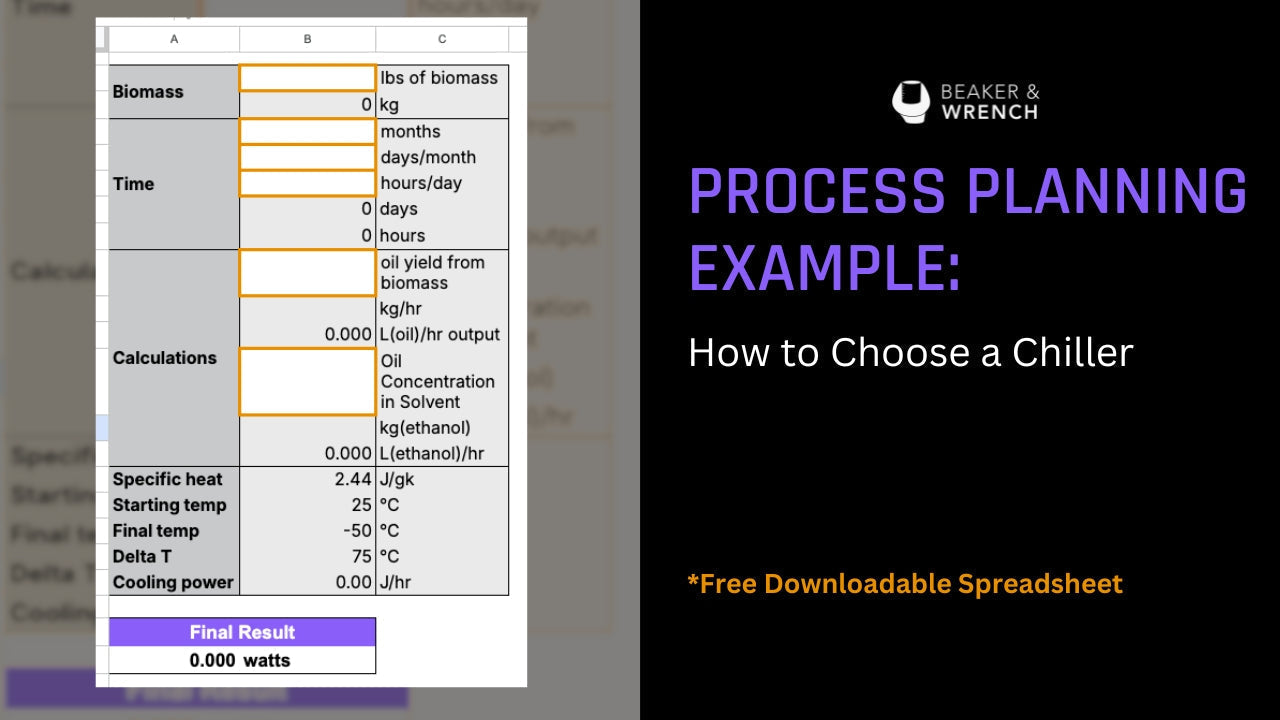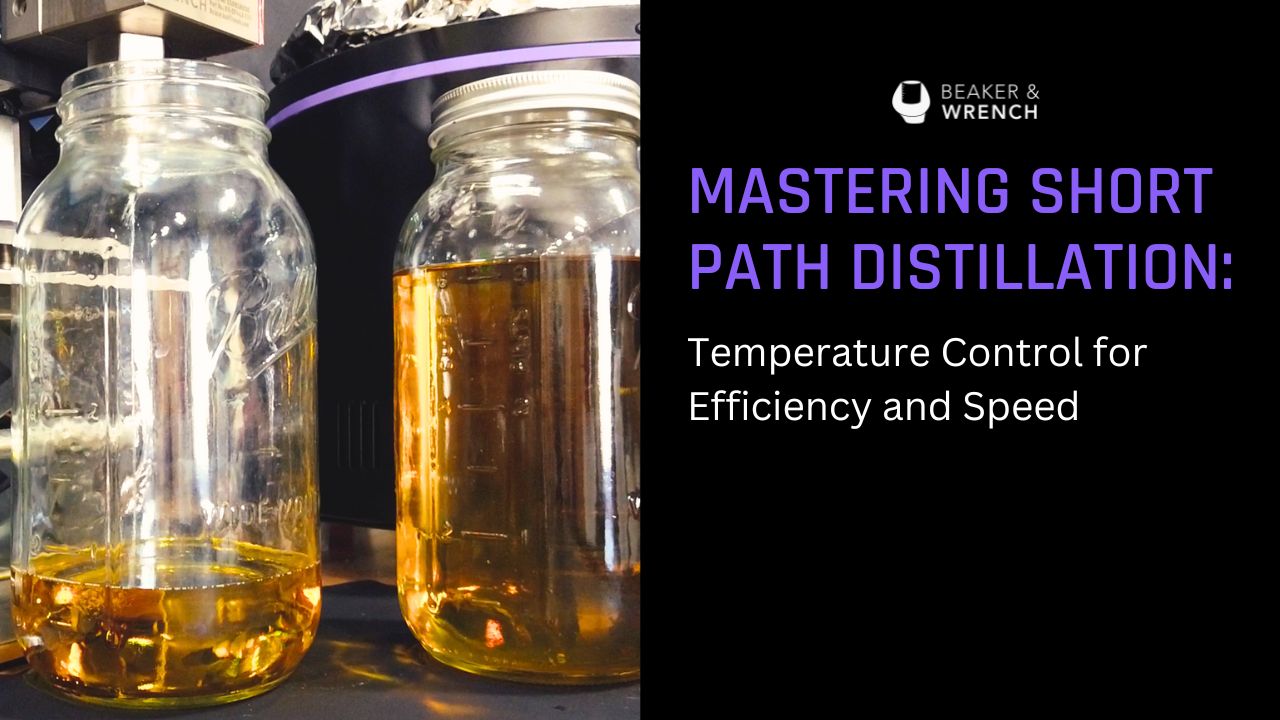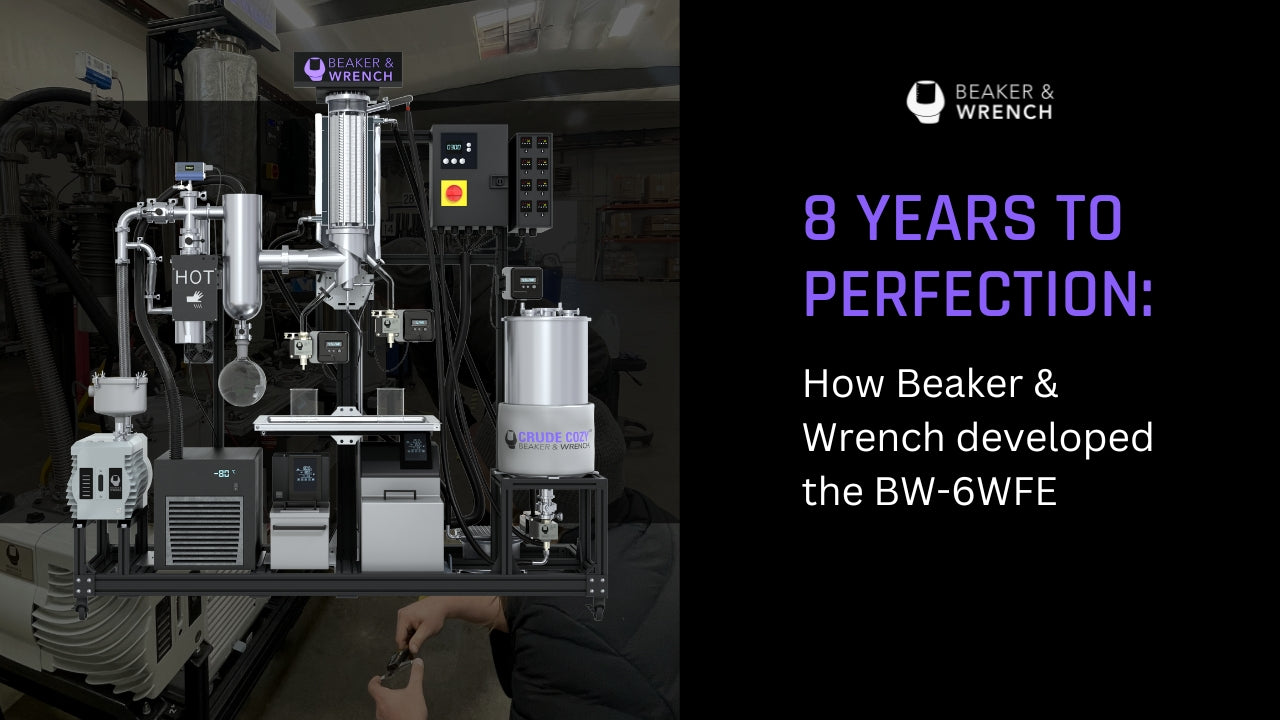The power of the spreadsheet:
If you’re planning a new extraction lab, or upgrading your existing one, I encourage you to embrace planning with spreadsheets. Utilizing a spreadsheet will help you properly determine the equipment that will best suit your lab. In this blog I will go through the factors that need to be considered when trying to choose the proper chiller to chill ethanol prior to extraction. We’ll break down the calculations, assumptions, and considerations necessary for making an informed decision using a spreadsheet.
Understanding Your Extraction Process: Laying the Foundation
Before diving into complex calculations, you need a solid understanding of your overall extraction process. This involves determining your processing capacity, operating schedule, and other details such as desired ethanol chilling temperature. Let’s start with the fundamentals: how much biomass are you processing? What’s your daily, weekly, and monthly throughput?
We’re going to use the following scenario; a lab is processing 10,000 pounds of biomass over three months, working one eight-hour shift, five days a week. This information forms the basis of our calculations. The number of kilograms of biomass directly impacts the amount of ethanol required for extraction. You need to define your production goals first—only then can you effectively determine the necessary equipment. Accurate estimation prevents costly overspending or insufficient chilling capacity.
Calculating Ethanol Requirements: A Step-by-Step Approach
With your processing capacity defined, the next step is determining the necessary ethanol volume. This calculation relies on several factors, including your expected oil yield and the ethanol-to-oil ratio in your final product. Let’s assume a 10% oil yield from the biomass. This signifies that 10% of your processed biomass weight will translate to oil extracted.
Next, factor in the ethanol-to-oil ratio for your final tincture. A common ratio is 10:1, meaning for every gram of oil, you need 10 grams of ethanol. This is only a rough estimation and may vary depending on the grind of the biomass, the oil content of the biomass and if the ethanol is re-used more than one extraction before being recovered. The more biomass/oil, the more ethanol you need, and consequently, the larger chiller you’ll require.
Determining Chiller Capacity: The Key Calculation
Now we delve into the core calculation—determining the necessary chiller capacity. This involves calculating the total cooling power needed to reduce the ethanol temperature from room temperature (let’s say 25°C) to your desired extraction temperature (ideally -50°C). This difference is known as delta T (ΔT), a crucial factor in determining the cooling power required.
We’ll need the ethanol’s specific heat—an approximation of 2.44 joules per gram Kelvin is commonly used. This value represents the amount of energy required to raise one gram of ethanol by one degree Celsius. Remember, this is a first-order approximation, and more precise values might be needed for specific situations. The accuracy of this calculation directly impacts the chiller’s required capacity and therefore, the final investment. A second-order calculation may account for the fact that chillers have more cooling power at warmer temperatures, and heat/losses occurring for the system but using the rated power at the target temperature will provide a conservative estimate.
Converting Calculations to Wattage: Choosing the Right Chiller
The final step involves converting our joules per hour calculation into watts, the standard unit for measuring power. This conversion is crucial for selecting a chiller with the appropriate capacity. Remember, wattage directly relates to the chiller’s cooling power. A higher wattage indicates a more powerful chiller capable of handling larger ethanol volumes and more rapid temperature reduction.
After performing the necessary calculations, using the assumptions and values stated above, you arrive at a required cooling power (expressed in watts). This wattage determines the specifications for the chiller you should purchase. It’s essential to account for potential inefficiencies, safety margins, and unforeseen circumstances. It’s always recommended to select a chiller with slightly higher capacity than the calculated minimum.
NOTE: Many chillers only provide cooling capacity at one temperature (usually where its capacity is highest), not capacity at your desired temperature; using these ratings incorrectly will lead to a very undersized chiller.
The Importance of Accurate Chiller Sizing: Avoiding Costly Mistakes
Investing in the right chiller is vital for several reasons. An undersized chiller leads to several problems:
-
Inefficient processing: Chilling ethanol takes longer, slowing down your overall extraction process.
-
Reduced yields: Suboptimal chilling temperatures can negatively affect the quality of your extracted oil and make subsequent processing more difficult and time consuming.
-
Compromised product quality: Uneven chilling can create inconsistent final product quality, impacting product consistency and the customer experience.
By carefully calculating your requirements, you ensure your chiller can meet the demand, preventing these costly pitfalls. It’s much more economical to invest in a correctly sized chiller up front.
Accessing the Spreadsheet: Refining Your Calculations
For a more precise and user-friendly approach, we have created a spreadsheet to aid you. The spreadsheet helps streamline the process, allowing you to input your specific parameters and instantly get your recommended chiller size. The spreadsheet is available for download [ Click Here to Download your Process Planning Spreadsheet].
Remember, the spreadsheet is a tool, not a replacement for understanding the underlying principles. It’s vital that you are comfortable with the calculations before using the spreadsheet, ensuring that the assumptions made align with your process. Using this tool, coupled with an understanding of the process, significantly improves your chance of making the right choice.
Conclusion: Planning for Success
By following the steps outlined above and utilizing the provided spreadsheet, you’ll make an informed decision that optimizes your extraction process and helps you avoid costly mistakes, maximizes your return on investment, and ultimately contributes to a more efficient and profitable operation.
Bonus Video: Watch our CEO and Founder Ace Shelander build the spreadsheet




Leave a comment
All comments are moderated before being published.
This site is protected by hCaptcha and the hCaptcha Privacy Policy and Terms of Service apply.